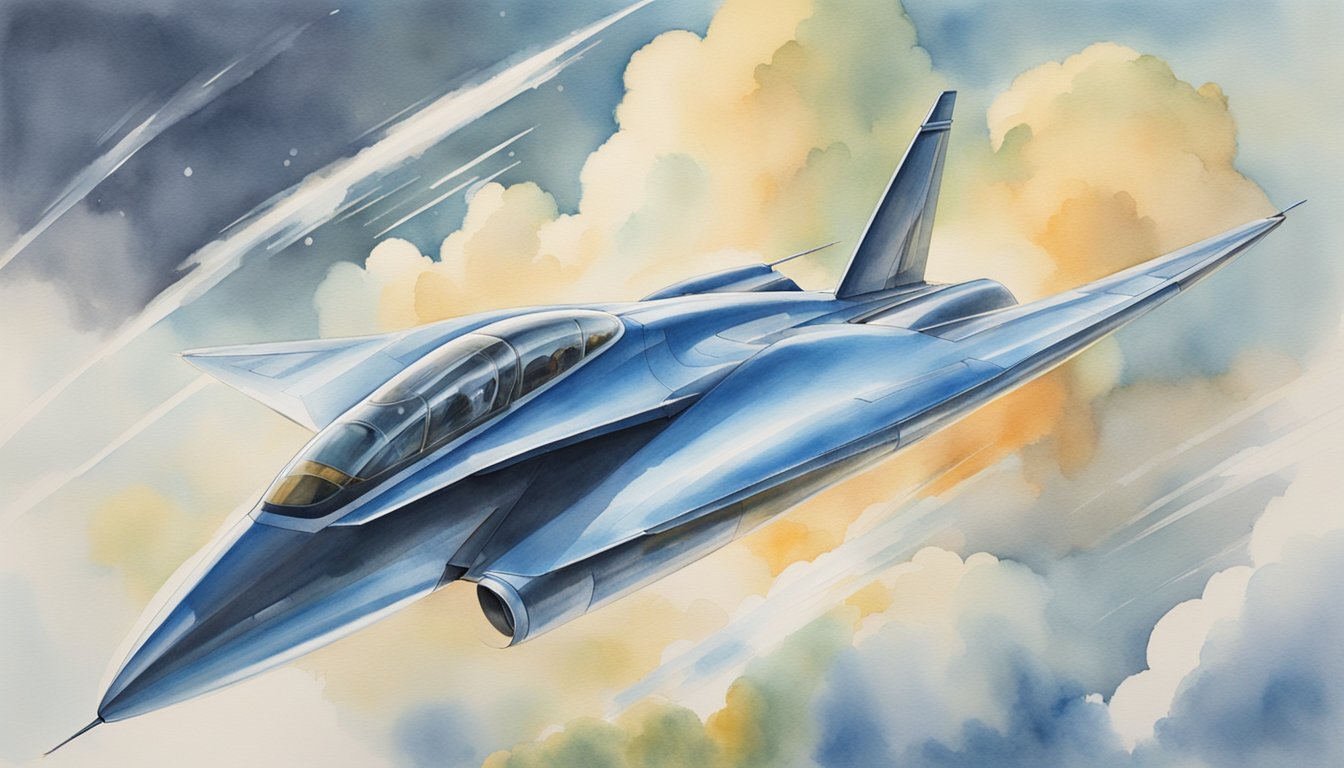Historical Evolution of Speed

Breaking the Sound Barrier
The journey towards faster aircraft began with the Wright Brothers in 1903 and continued with various aviators pushing the boundaries of speed. The significant milestone in aviation history was when the sound barrier was first broken in 1947 by Chuck Yeager in the Bell X-1, achieving a speed greater than the speed of sound, which is about 768 mph (1,238 km/h) at sea level.
The Jet Age and Beyond
After breaking the sound barrier, the world entered the Jet Age, which saw the development of faster and more sophisticated aircraft. The Messerschmitt Me 262 was the first operational jet-powered fighter aircraft, debuting during World War II.
Cold War Influence on Aircraft Design
During the Cold War, the United States and the Soviet Union competed to develop faster and more advanced aircraft for military purposes. Both nations increased their Mach numbers – a measure of speed relative to the speed of sound – as part of this intense rivalry. NASA played a critical role in advancing aviation technology during this period.
The Supersonic Era: Concorde and Tu-144
The pinnacle of speed in the aviation industry was the development of supersonic passenger aircraft. The two most notable examples are the Concorde and the Tu-144, both of which were unveiled at the 1969 Paris Air Show. The Concorde, a joint venture between France and the United Kingdom, achieved a maximum speed of Mach 2.04 (1,354 mph, 2,180 km/h), while the Soviet Union’s Tu-144 reached a maximum speed of Mach 2.29 (2,430 km/h).
Unfortunately, the days of supersonic commercial travel were short-lived. The Concorde retired in 2003 and the Tu-144 in 1978. The speed records achieved by these aircraft have remained unmatched by other passenger planes to date. However, the legacy they left behind continues to inspire future advancements in aircraft design and speed.
Cutting-Edge Fastest Planes
Iconic Lockheed SR-71 Blackbird
The Lockheed SR-71 Blackbird held the title of the fastest plane in the world for decades. This incredible aircraft was developed by the Lockheed Corporation for the US Air Force (USAF) and first took to the skies in 1964. The Blackbird’s astonishing top speed of over 2,500 mph was made possible by its advanced titanium construction and innovative design. The SR-71 was based at Beale Airforce Base and played a crucial role in aerial reconnaissance during the Cold War.
Experimental Pioneers: North American X-15
Before the Blackbird, the North American X-15 held the aviation speed record. With a top speed of over Mach 6.7, this experimental aircraft pushed the limits of speed by utilizing a powerful rocket engine. The X-15 was developed for high-speed aeronautic research and was launched from a Boeing B-52, often reaching the edge of space. Operated by the U.S. Air Force and NASA, the X-15 made its home at Edwards Air Force Base and was essential in advancing our understanding of hypersonic flight technology.
Advancements in Military Aviation
In the realm of military aviation, various cutting-edge planes have been developed to break speed barriers. The Lockheed YF-12 is one such aircraft, capable of speeds over 2,575 mph. It was a precursor to the Blackbird and shared similarities in design and construction. The YF-12A is another impressive aircraft from Lockheed’s YF series that has been pushing the limits of speed and technology.
Civilian Aviation and Future Prospects
While military aviation has seen many speed advancements, the civilian sector has not been idle. High-speed private jets like the Flaris LAR-01 boast speeds of up to 288 mph, making it one of the fastest single-engine aircraft in the market. As technology continues to advance, the aviation industry is eagerly anticipating the arrival of Lockheed’s SR-72, which may push the boundaries of speed even further. With its cutting-edge design and state-of-the-art materials, the future of aviation speed is undoubtedly bright.

